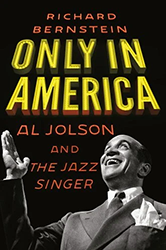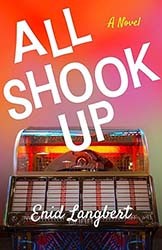Many young readers may be unfamiliar with traditional Jewish klezmer music played at communal celebrations and concerts, but they will still enjoy this inventive picture book. Kyra Teis’s jazzy, free-verse text approximates the rhythm of the music itself, while her colorful and kinetic pictures make the world of klezmer accessible and exciting. Both an informational book and a work of poetry, Klezmer! immerses both children and adults in a unique cultural experience.
Music cannot be contained within the pages of a book, but Teis’s rhymes and images give readers a vivid sense of her subject. Following a young girl on her journey through a New York City neighborhood, Teis brings all the essential elements of klezmer into view. There are clarinets and violins, the Lower East Side, loving grandparents, as well as multicultural and multigenerational musicians. A fiddle is wistful, “playing a memory/across its strings,” but the ensemble can also “Turn up the heat!” as a “Clarinet squawks and bleats.” Instead of explaining the different instruments and historical origins of klezmer music, the author and illustrator presents them as a visual and aural performance. She compares the creation of this musical form to a cook following a recipe, producing “a drain-in-the-bowl,/touch the soul/groove.”
Turning the pages of the book, readers feel pulled into the action of a musical event. Teis combines colorful scenes of people interacting with collage, including photos. The resulting pictures seem almost three-dimensional, as in a wedding scene where people you might find in your family albums support a drawing of a musical staff topped by the bride and groom. In another informative picture, a small boat carrying photographed immigrants holding drawings of instruments approaches the Statue of Liberty in New York Harbor. A block of text against the blue background of the ocean contains factual and poetic words: “From shtetl to here,/klezmer catches your ear.” Authentic historical posters of klezmer artists also appear in contemporary scenes, emphasizing the timelessness of this art form.
Introducing children to joyful parts of the Jewish past is always enriching. When the past continues into the present, this exchange is even better. From accordion to bass, from uptown to downtown, the sounds and stories of klezmer come alive in this book.
This highly recommended picture bookincludes an afterword, “About Klezmer Music,” and a QR code for a klezmer performance.
Emily Schneider writes about literature, feminism, and culture for Tablet, The Forward, The Horn Book, and other publications, and writes about children’s books on her blog. She has a Ph.D. in Romance Languages and Literatures.




